About us
How the cookware produce?
Cast iron cookware can boast that each piece is original.
The production itself begins with the design of the model, which is stamped into the molding compound, creating a unique mold with a cavity into which the molten iron alloy will then run.
After solidification, the sand mold is broken and a casting is removed from it, which is a semi-finished product for the next steps of production.
This foundry technology makes it possible to produce products with considerable shape complexity and thus achieve a design that is incomparable to classic mass-produced tableware.
The foundry in which we cast our tableware is located in Baixiang County, Xingtai, Hebei province, China.
So now let's see what the production of our cookware actually looks like!
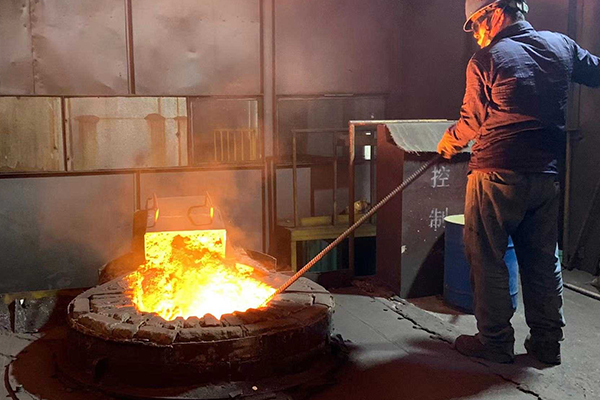
The birth of our tableware begins with the tapping of molten cast iron from an electric-induction furnace. Cast iron at a temperature of approximately 1,400 °C is poured into a crucible, which is then transported to the molding line.

Each piece of tableware has its own model device, which is stamped into the sand molding compound and thus creates a unique form.
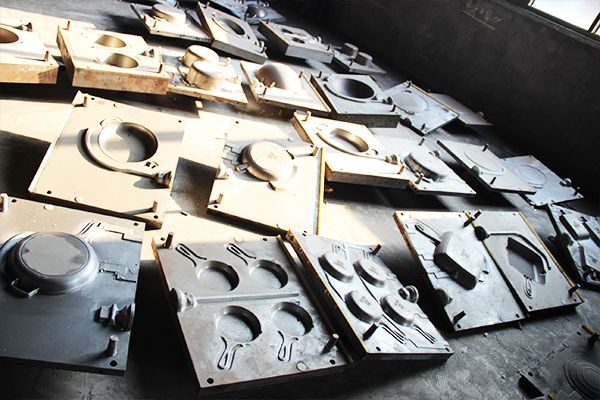
The molds, which are filled with molten metal through the casting hole, are separated from their destruction by about twenty minutes. After twenty minutes, the metal hardens, the mold is broken and the desired casting is removed from it.
The sand from the broken mold is then regenerated and used to make another mold.

After removing the casting from the broken mold, the castings travel to the blasting device, where steel shots hit the surface of the cast iron at high speed.These shots rid the casting of the remains of the molding compound and thus the pan acquires its characteristic surface.
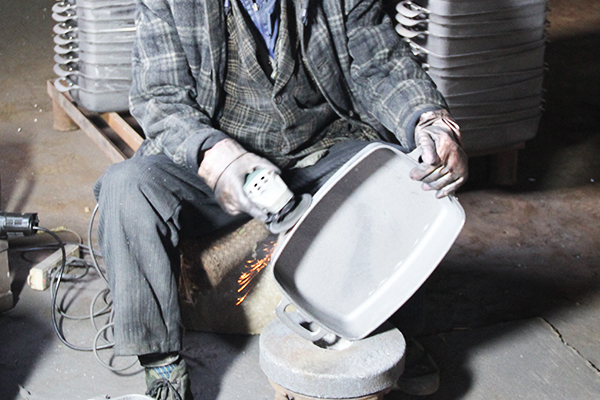
The last step in the foundry is the grinding.
Here, each piece undergoes a visual inspection and is then freed of any imperfections using grinding stones.
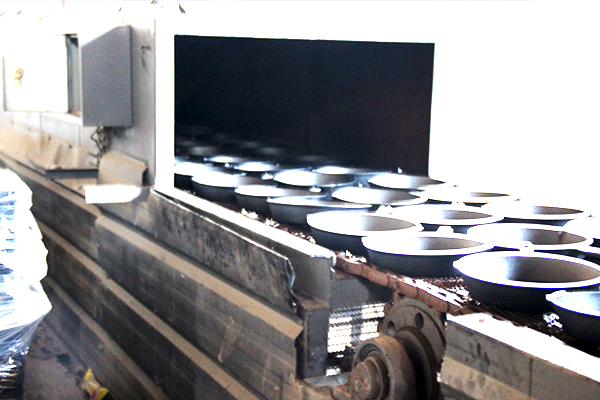
Before the actual enameling process, the castings must be annealed.
We anneal the castings at approx. 850 °C, thanks to which they are freed from the internal tension that arises in them during solidification in the mold. Annealing also removes impurities from the castings, which could cause defects during subsequent enamelling.

After heat treatment, cast iron pans are sandblasted and ground enamel frit is applied to their surface. In order for the frit to adhere well to the surface, it is applied in the form of a water suspension, which is then allowed to dry.Then the pan continues to the last production stage, the so-called sintering.

And again into the oven... The pans with the dried frit go through the oven again, but this time at lower temperatures and for a different purpose. In this, the last production phase, sintering occurs on the surface of the cast iron castings with the mentioned enamel frit.
The result of this operation is the perfect adhesion of these two materials and the creation of a glass-ceramic surface that not only protects the pan against chemical and mechanical influences, but also gives it a characteristic design.
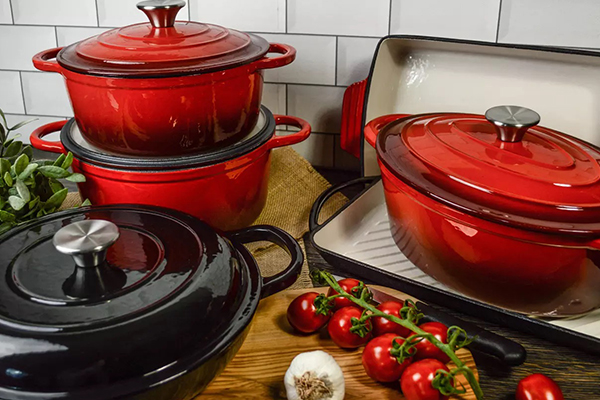
Our annual cookware production capacity is 8,500 tons . We have got the certificate of BSCI and our cookware items also passed the LFGB and FDA testing.
If there is anything interested for you. Please feel free to contact with us.
Categories
Contact Us
Contact: Daniel
Phone: +86 132 3113 3119
Tel: +86 311 68035650
E-mail: sales@hbykcookware.com
Add: Baixiang County, Xingtai, Hebei Province, China.